Local News
Congregation Etz Chayim puts synagogue building up for sale
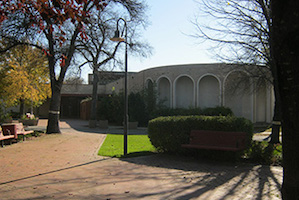 Posted Sept. 16, 2022 By MYRON LOVE It would seem that it is finally happening. After “at least a decade” – in the words of Congregation Etz Chayim board member and spokesperson Avrom Charach – of talking about it and considering different options, north Winnipeg’s largest synagogue has taken a concrete step forward in relocating to the south end.
Posted Sept. 16, 2022 By MYRON LOVE It would seem that it is finally happening. After “at least a decade” – in the words of Congregation Etz Chayim board member and spokesperson Avrom Charach – of talking about it and considering different options, north Winnipeg’s largest synagogue has taken a concrete step forward in relocating to the south end.
The “for sale” sign outside the 70-year-old building went up last weekend.
Congregation Etz Chayim was formed 20 years ago from the merger of the Rosh Pina, Bnay Abraham and Beth Israel congregations – at the time the three largest congregations in the North End. With the Jewish population in our city rapidly declining in the West Kildonan/Garden City neighbourhoods and increasing at the same pace in River Heights, Tuxedo and related areas south, the leaders of the three congregations felt that merger was the practical way to ensure one strong Conservative congregation in the North End.
The new congregation carried on services at the former Rosh Pina building. The Rosh Pina, founded in 1893, was our community’s second oldest and second largest congregation (after the Shaarey Zedek) and had been at the current location since 1952.
Even with the merger, membership has been declining slowly but steadily over the past 20 years as older members have passed away and the shift south has grown apace.
Charach reports that 80% of Etz Chayim’s membership now lives south. For young families who belong to the congregation, the number is approaching 90%.
It is not only the fact that the majority of the congregation now lives south that is driving the decision to relocate to that area, Charach points out. “After 70 years, our building needs a lot of work,” he notes. ”We think it makes more sense to spend the money where most of our members are living instead of where we are now.”
(Contrary to rumour, Charach adds, Etz Chayim is still “financially viable”.)
The plan, he says, is to purchase and renovate an existing building – or rent temporarily if need be until a suitable building can be found. “All options are on the table,” Charach says.
The goal is to find a location within a 10-minute drive of most of the shul members. That would be a location accessible to River Heights, Tuxedo, Lindenwoods and Charleswood.
“Our Relocation Committee has an idea of what we would like to spend on a new building,” Charach notes. “We also have a fair idea as to how much money we may be able to raise from among our members. We hope that what we receive from the sale of our building will cover most of the cost of buying and renovating our new building.
“We would like to be in our new home by next summer – in time for next Yom Tov.”
Charach, who works in property management, estimates that the current building should sell for up to $10 million. “Our committee is considering all possible scenarios, including the possibility that we can’t get the price we want,” he says. “We have contingency plans should that be the case.”
He adds that the size of the projected new synagogue building is not as important as may have been the case in the past. “We learned during the pandemic that the actual physical space isn’t as important as it used to be,” he points out. “Over the last two years of Covid-related restrictions, we carried on with the minimum ten we needed for a minyan while livestreaming our services. It looks like, in future, a growing number of shul members will choose to watch services from the comfort of their homes – with fewer actually attending in person.”
There is one additional factor that has to be considered in the sale of Etz Chayim’s building and property. That is the presence of the Rosh Pina Co-op on the property. The co-op – which was completed in 1991 – was the last of four low-cost seniors’ apartment blocks that were built adjacent to synagogues – the others being the HSBA Hebrew Sick Gardens (beside the former Beth Israel Synagogue) built in 1971, the Beit Am (beside the former Bnay Abraham Synagogue) which opened in 1972, and Shalom Gardens, next to Temple Shalom, which was completed in 1987.
(The goal originally was to provide low cost housing for Jewish tenants who would hopefully take advantage of living close to the sponsoring synagogue and attend services regularly. However, as the Jewish population in the North End has steadily declined, the number of Jewish tenants in the Hebrew Sick Gardens, Beit Am and Rosh Pina Co-op has dwindled to very few.)
As Charach points out, under the terms of the arrangement with the Rosh Pina Co-op, while the congregation retained ownership of the land, it doesn’t own the co-op.
“We would be able to sell the land,” he says, “but the co-op’s lease doesn’t expire until 2030. The co-op ownership would be a separate negotiation between the co-op management and whoever buys our building and land.”
He reports that while a few members may be unhappy to see Etz Chayim leaving the North End, almost everyone has responded positively to the decision.
Local News
Thank you to the community from the Chesed Shel Emes
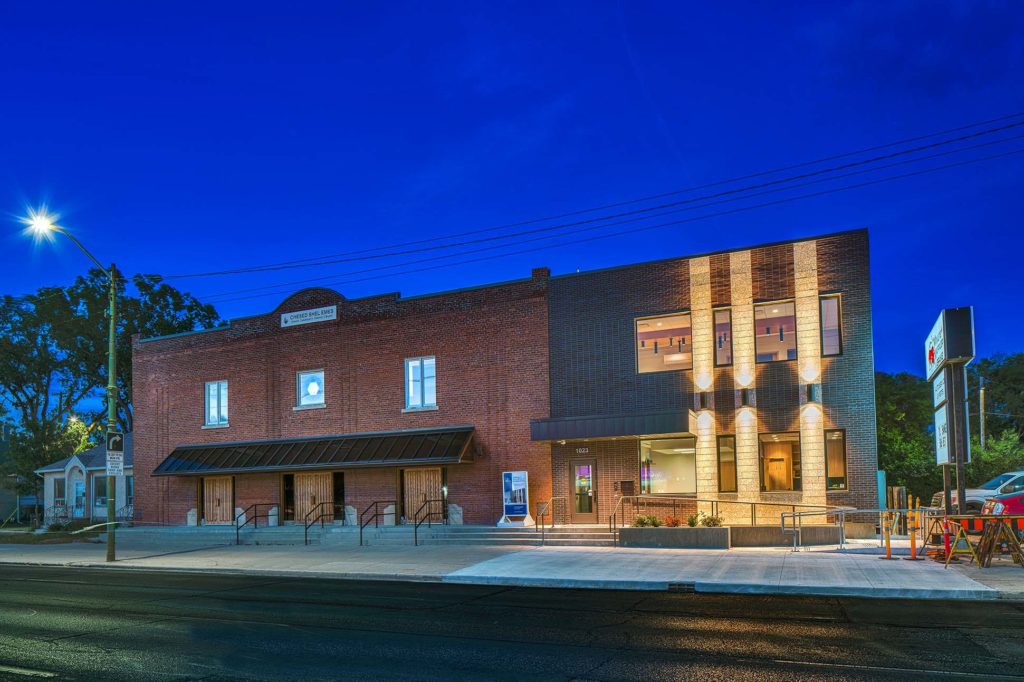
We’re delighted to share a major milestone in our Capital Campaign, “Building on our Tradition.” Launched in November 2018, this campaign aimed to replace our outdated facility with a modern space tailored to our unique needs. Our new building is designed with ritual at its core, featuring ample preparation space, Shomer space, and storage, creating a warm and welcoming environment for our community during times of need.
We’re grateful to the nearly 1,000 generous donors who contributed over $4 million towards our new facility. A $750,000 mortgage will be retired in November 2025, completing this monumental project in just seven years.
We’re also thrilled to announce that our Chesed Shel Emes Endowment Fund has grown tenfold, from $15,000 to $150,000, thanks to you, the Jewish Foundation of Manitoba’s FundMatch program, and Million Dollar Match initiative in 2024. Our fund helps ensure that everyone can have a dignified Jewish funeral regardless of financial need.
As we look to the future, our goal remains to ensure the Chevra Kadisha continues to serve our community for generations to come. Our focus now shifts to replenishing our savings account and growing our JFM Endowment fund.
We’re deeply grateful for your support over the past several years.
It’s our privilege to serve our community with care and compassion.
With sincere appreciation,
Campaign cabinet: Hillel Kravetsky, Gerry Pritchard, Stuart Pudavick,
Jack Solomon, and Rena Boroditsky
Murray S. Greenfield, President
Local News
Winnipeg Beach Synagogue about to celebrate 75th anniversary
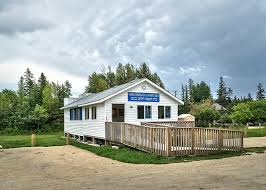
By BERNIE BELLAN (July 13) In 1950 a group of cottage owners at Winnipeg Beach took it upon themselves to relocate a one-room schoolhouse that was in the Beausejour area to Winnipeg Beach where it became the beach synagogue at the corner of Hazel and Grove.
There it stayed until 1998 when it was moved to its current location at Camp Massad.
On August 2nd members of the synagogue will be holding a 75th anniversary celebration.
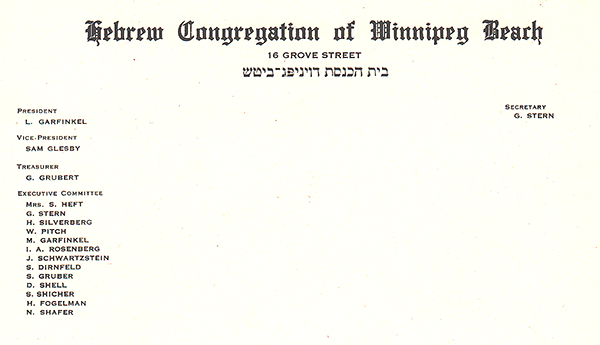
As part of the celebration anyone who is a descendant or relative of any of the original members of the first executive committee (as seen in the photo here) is invited to attend the synagogue that morning.
If you are a relative please contact Abe Borzykowski at wpgbeachshule@shaw.ca or aborzykowski@shaw.ca to let Abe know you might be attending or for more information about the 75th anniversary celebration.
We will soon be publishing a story about the history of the beach synagogue, which is something I’ve been writing about for over 25 years.
Local News
Vickar Family cuts ribbon on new Tova Vickar and Family Childcare Centre
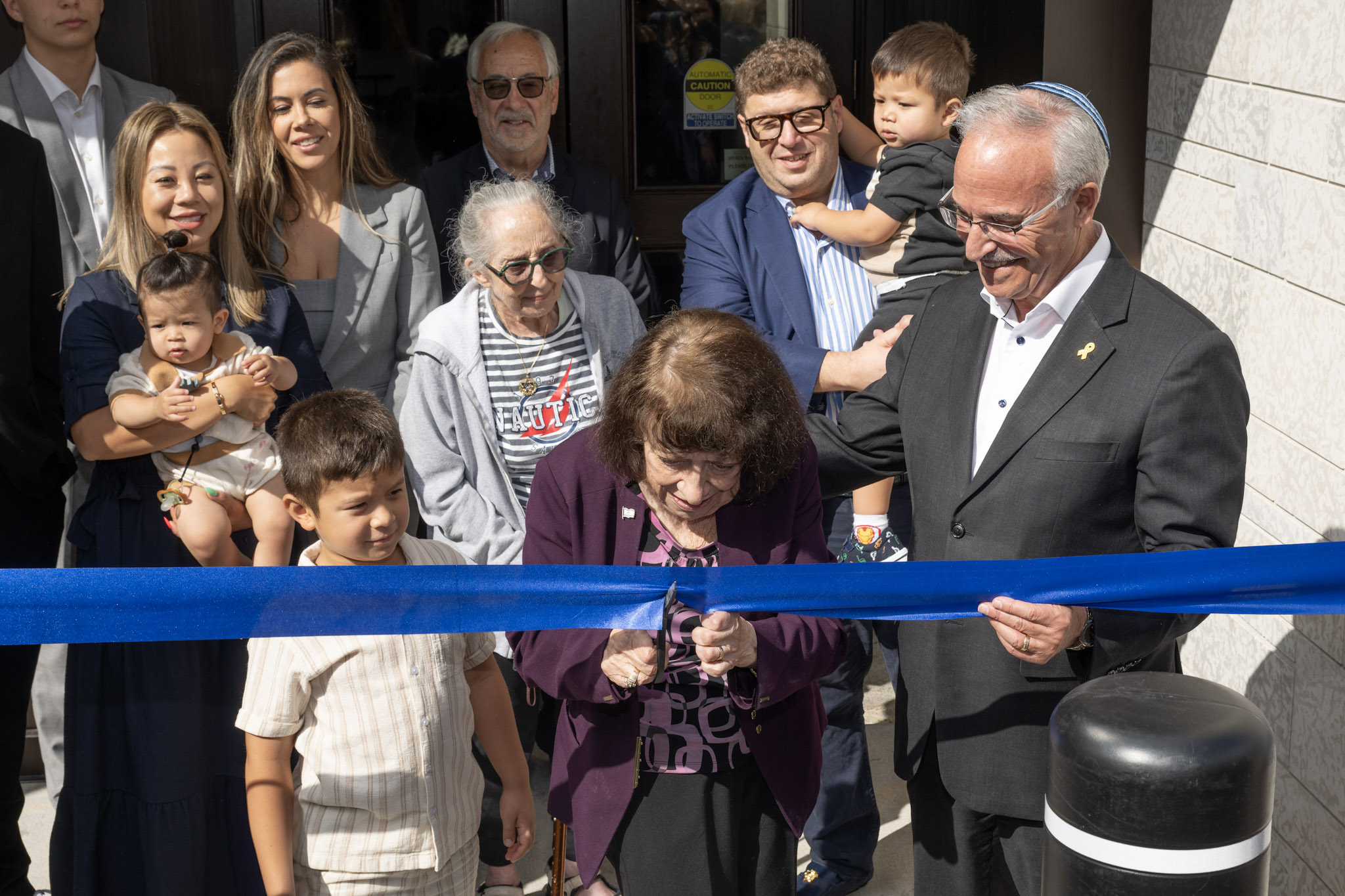
By MYRON LOVE In the words of Larry Vickar, the Shaarey Zedek’s successful Dor V’ Dor Campaign “is not only a renewal of the synagogue but truly a renewal movement of Jewish life in our community.”An integral part of that renewal movement was the creation of a daycare centre within the expanded synagogue. On Monday, June 23, Larry and Tova Vickar cut the ribbon, thereby officially opening the Tova Vickar and Family Childcare Centre in the presence of 100 of their family members, friends and other supporters of the project.
The short program preceding the morning ribbon-cutting began with a continental breakfast followed by a welcome by both Fanny Levy, Shaarey Zedek’s Board President, and Executive Director Dr. Rena Secter Elbaze. In Elbaze’s remarks, she noted that Larry and Tova wanted their family (including son Stephen and family, who flew in from Florida) and friends at the event to celebrate the opening of the Tova Vickar and Family Childcare Centre, “not because of the accolades, but because, as Larry put it, he hopes that their investment in the congregation will inspire others to do the same.”
“When Larry and I spoke about what this gift meant to him and the message he wanted people to take away,” she continued, “I couldn’t help but connect it to the teachings of Reb Zalman Schachter-Shalomi whose book – Age-ing to Sage-ing – changes the whole way we look at the concept of ageing and basing it on our ancestral teachings.”
She explained that his concept of “Sage-ing” is based on three key ideas – Discover your meaning and purpose; accept our mortality and think about the legacy you want to leave.
“Larry spoke about these exact concepts when we met,” she said.
Elbaze also noted the presence of Shaarey Zedek’s newly-arrived senior Rabbi Carnie Rose, former Rabbi Alan Green, and area MLAs Mike Moroz and Carla Compton.
Larry Vickar expressed his great appreciation for all those in attendance. “Tova and I are deeply moved to stand here with you today for this important milestone in our community”, he said. “We are grateful to be surrounded by all of you, the people we care about, our family and friends… you who have touched our lives and played some part in our journey.”
